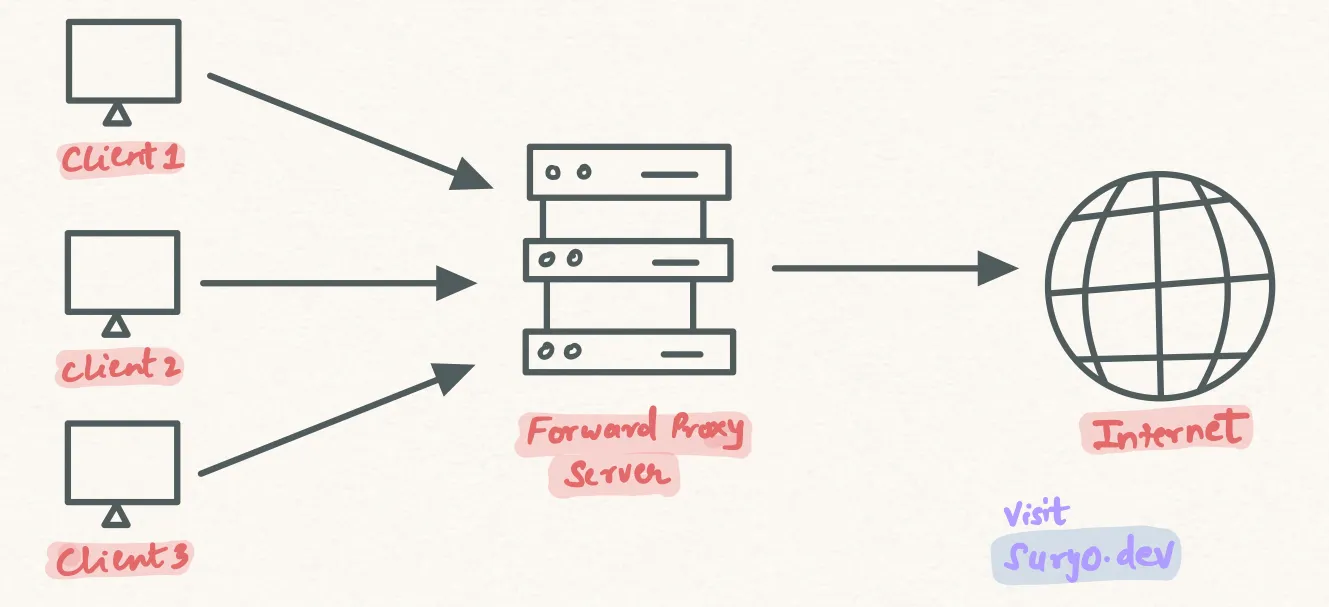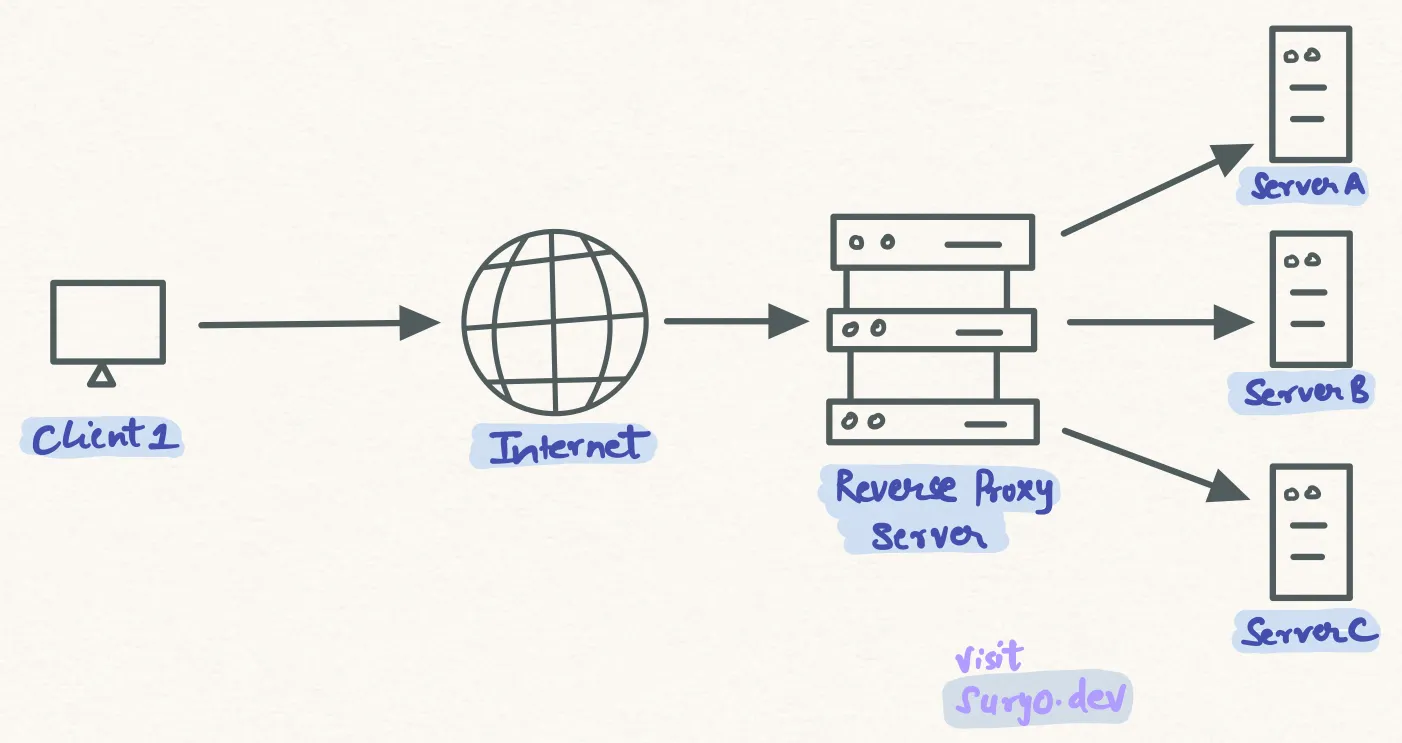Internet being a vast network, it becomes crucial to protect your digital resources and identity online. That’s where forward and reverse proxies come in handy. Let’s dive into how these proxies work their magic in keeping our online world running smoothly.
Proxy
A proxy is a server. It catches request from client and delivers to the target server and then returns the server’s response back to the client. Proxies work like a middleman handling response between client and server. Proxies come in various types, such as forward proxy that primarily benefits client by masking their IP address and reverse proxies which helps in protecting backend servers.
Forward Proxy
A forward proxy, often simply called a proxy, is a server that sits between user devices and the internet. When a user makes a web request, it goes to the forward proxy first. The proxy then makes the request on behalf of the user, receives the response, and forwards it back to the user.
Suppose you are trying to scrape data from a website, say LinkedIn, using your college network which is using a forward proxy. If LinkedIn blocks the IP, chances are nobody inside the proxy is going to be able to access LinkedIn. This is because LinkedIn is only able to see your proxy’s IP address, masking your own.

Benefits of Forward Proxy
- Anonymity : The destination server sees the proxy’s IP address, not the user’s.
- Caching : Proxies can cache frequently requested content, improving load times.
- Access Control : Organizations can use proxies to restrict access to certain websites. Universities use forward proxy to block inappropriate content.
Reverse Proxy
A reverse proxy sits in front of web servers and manages incoming requests from clients. To the client, the reverse proxy appears to be the actual web server.
You can use AWS Cloudfront as a reverse proxy. Cloudfront receives request from the clients (users) and then forwards these requests to your origin server. Using a load balancer is often recommended.

Benefits of Reverse Proxy
- Load Balancing: Distributes incoming traffic across multiple servers.
- Security: Acts as a shield, protecting backend servers from direct exposure to the internet.
- SSL Encryption: Can handle SSL encryption, reducing the load on backend servers.
- Caching: Like forward proxies, can cache content to improve performance.